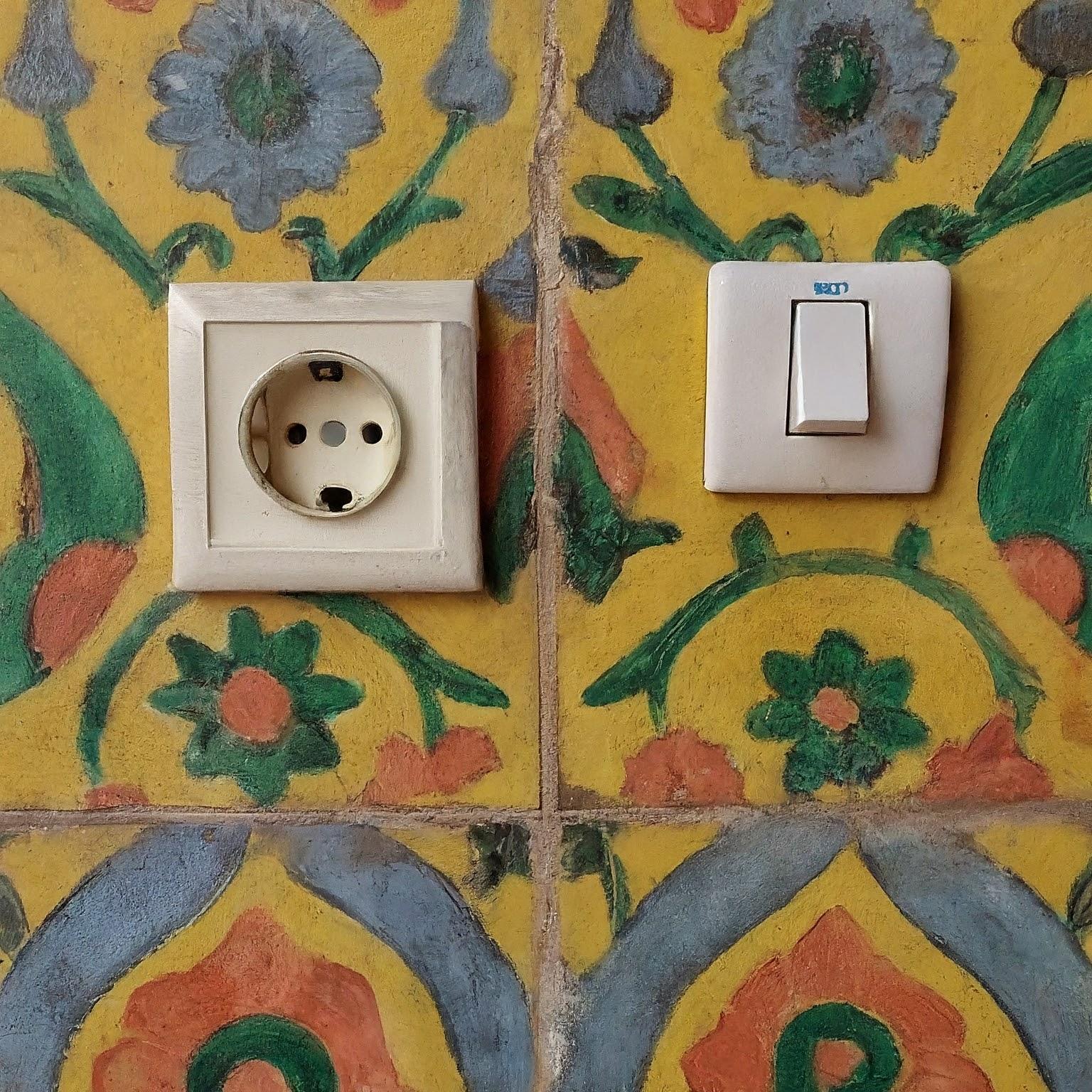This guide covers everything you need to know about India’s power supply, plug types, and practical tips for using your appliances, with insights to make your travel smoother.
Power Supply in India
Voltage: India uses a standard voltage of 220-240 Volts (V) AC. This is higher than many countries, like the US (120V) or Japan (100V), so double-checking your device compatibility is essential.
Frequency: The power supply operates at 50 Hertz (Hz). Most modern electronics, like phone chargers and laptops, are designed to handle this frequency, but older or specialized devices may not.
Insight: Power fluctuations can occur, especially in rural areas or during peak usage times (like summer). Consider using a surge protector for sensitive devices like cameras or laptops to avoid damage.
Plug and Socket Types in India
India uses three main plug types, which can vary by region or accommodation. Knowing these will help you prepare:
- Plug Type C (“Europlug”): Features two round prongs, rated for 5 Amps. Commonly used for low-power devices like phone chargers, earbuds, or small gadgets. It’s widely compatible but not always secure in older sockets.
- Plug Type D: Has three round prongs in a triangular pattern, also rated for 5 Amps. Found in many hotels and homes, it’s used for appliances like hairdryers or portable speakers.
- Plug Type M: Similar to Type D but larger, with three round prongs rated for 15 Amps. Used for high-power appliances like air conditioners or kitchen equipment. Less common in budget accommodations.
Insight: In older buildings or budget guesthouses, sockets may be loose or worn, making it hard to keep plugs secure. A universal adaptor with a firm grip is a lifesaver. Some modern hotels in cities like Delhi or Mumbai offer universal sockets, but don’t rely on this everywhere.
Traveling with Electronics: Must-Know Tips
- Universal Adaptor: Bring a universal travel adaptor to fit Type C, D, and M sockets. These are compact, affordable, and widely available online or at airport shops. Test it before your trip to ensure it fits securely.
- Voltage Converter: Check your device’s voltage rating (usually on the charger or device label). Most modern electronics (phones, laptops, cameras) support dual voltage (100-240V) and only need an adaptor. If your device is rated for 110-120V (common in the US), you’ll need a voltage converter to prevent damage. For example, a US hairdryer (120V) will burn out without one.
- Power Strip for Multiple Devices: If you’re traveling with multiple gadgets (phone, laptop, camera, etc.), a multi-socket power strip is a game-changer. It lets you charge everything with one adaptor. Choose a compact, travel-friendly model with surge protection for added safety.
- Check Your Device Manual: Always consult your appliance’s manual or label for voltage and plug compatibility. For instance, some high-power devices like curling irons or electric kettles may not support 220V and could require a converter.
- Battery Packs for On-the-Go: India’s vibrant cities and long travel days (like train journeys or road trips) mean you might not always have access to a socket. A high-capacity power bank (10,000mAh or more) is a must for keeping your phone or camera charged during sightseeing.
Additional Tips for Travelers
- Hotel and Hostel Sockets: High-end hotels often provide universal sockets or adaptors on request, but budget accommodations may not. Always carry your own adaptor to avoid surprises.
- Rural and Remote Areas: In places like the Himalayas or rural Rajasthan, power outages are common. A solar-powered charger can be a great backup for small devices like phones or GPS trackers.
- Buying Locally: If you forget an adaptor or need a replacement, electronics shops in India (like those in Delhi’s Palika Bazaar or Mumbai’s Crawford Market) sell adaptors and converters at low prices. However, quality can vary, so check reviews or stick to reputable brands.
- Safety First: Avoid overloading sockets with multiple high-power devices, as this can trip circuits or cause overheating. Indian sockets in older buildings may not be grounded, so use caution with sensitive electronics.
- Travel Light: If you’re backpacking across India, prioritize dual-voltage devices to minimize the need for converters, which can be bulky. For example, opt for a dual-voltage travel hairdryer or a USB-powered shaver.
Categories :


